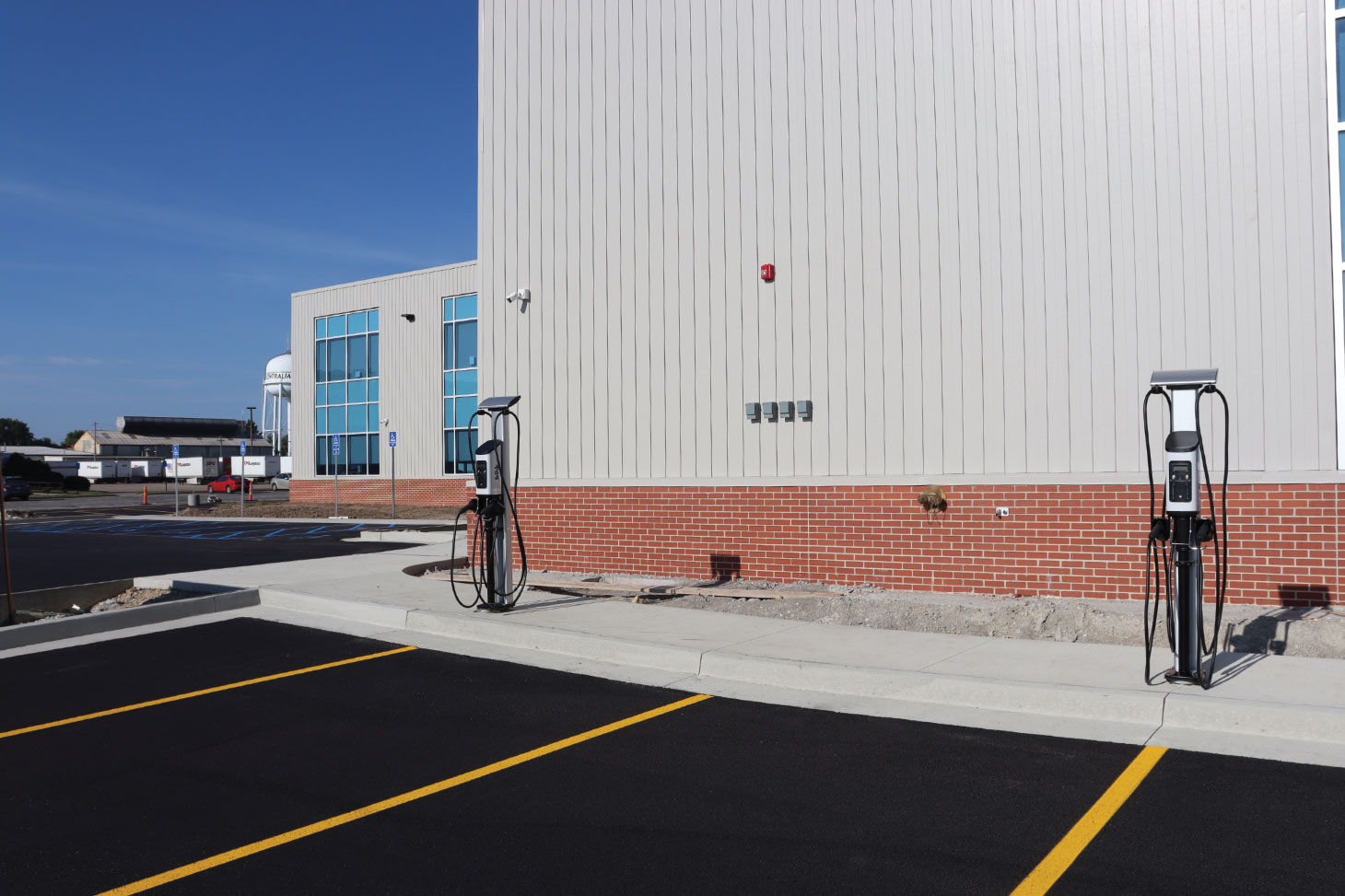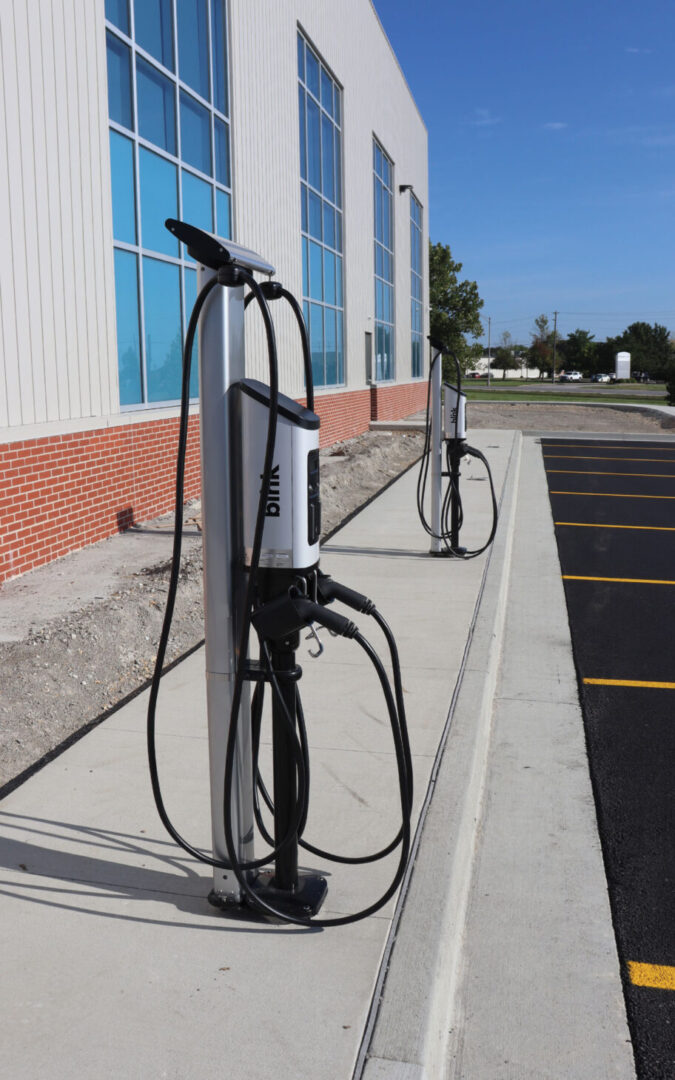
There are more and more electric vehicles (EVs) on the roads nowadays. All have batteries that require charging, which is why the demand for EV charging stations is constantly rising.
You’ll find these stations in all kinds of locations, such as homes, parking lots, commercial and industrial sites, major distribution centres and other areas. Many EV chargers use concrete foundations, either poured or pre-cast, but alternative solutions like helical piles and micropiles are another great option for these structures.
As a long-time supplier of foundations for streetlights and substation structures, Missouri-based Chance Foundation Solutions has developed plenty of expertise in this area and is now a key player in the EV infrastructure market.
The company’s deep foundation solution for EV charging stations is a single-piece, hollow steel helical pipe pile that provides lasting stability and durability for installations in various site and soil conditions.
Ben Jennings, an application engineer for Chance civil and utility helical products, spoke to Piling Canada about some advantages of steel screw foundations for EV charging stations.
Jennings says steel can be a safer bet than concrete for installations in colder conditions, such as Canadian winters. That’s because pouring concrete in sub-freezing temperatures requires keeping the mix warm long enough to prevent ice crystals from forming during curing, but that’s typically not an issue with steel helical piles. He says screw piles can be an effective foundation solution in situations where there is heaving due to frost, high water tables and other unstable ground conditions. Steel helical piles are also well-suited for sites with confined spaces or limited access where heavy vehicles and equipment typically can’t access, such as a location with overhead power lines.
“Especially if you can’t get a concrete truck to the site, you should consider a steel screw foundation,” Jennings said, adding it’s important to know the soil conditions when screw piles are installed. “The soil is generally going to be the failure mechanism for the foundation, so soil strength is going to be the most important design criteria for designing a foundation.”

As soon as the foundation has been installed, you can trench the wires and mount the EV charger all in one trip to the jobsite. It’s not an issue of waiting for concrete to cure for several days to get the job done.
Ben Jennings, Chance Foundation Solutions
He also says even a simple description of the soil is useful if a more thorough soil assessment isn’t available. Screw piles shouldn’t be installed in solid rock, nor are they recommended for use in cobble, soft clay or very loose sandy soils.
Another important foundation design consideration is conditions above the ground. For example, wind typically applies the largest lateral loads once EV charging stations are up and running. Jennings says it’s essential that foundations are sized large enough to handle this load during high wind events, since seismic activity can be another lateral load consideration in areas with this kind of risk. He says a common challenge for helical pile installers is that the ground may contain a few surprises. “You might find out on a site that there’s an old, abandoned roadbed or old asphalt that is two or three feet deep. Typically, what you’re going to have to do is either pre-drill or core through it such that you can get the foundation to go past it,” Jennings said.
Easy installation
Chance lists numerous reasons why helical piles are a good choice for EV charger foundations. One is that they are a sustainable option. There are fewer life cycle emissions compared to concrete alternatives, and the piles are made from recycled steel. The piles are also removable and reusable, increasing the long-term value and reducing the environmental impact. However, one main benefit is quick installation – Jennings says it can take less than 10 minutes for a two-person crew to screw in a helical pile with typical installation equipment.
“One person operates the machine, and the other is on the ground making sure the pile goes in level and plumb. It’s a quick, simple and efficient process.”
According to Jennings, screw piles will typically measure four inches in diameter and 56 inches long for foundations for Level 2 EV chargers, the most common type in Canada. Chance’s helical piles can be screwed directly into the ground if needed, eliminating the need for soil excavation or spoils removal. They can also be installed before concrete is poured or retrofitted in areas where existing concrete has been cored. They also come wire-ready, with a cableway opening so a conduit can be fed through the shaft of the foundation and connected to an EV charger unit right away.
“As soon as the foundation has been installed, you can trench the wires and mount the EV charger all in one trip to the jobsite. It’s not an issue of waiting for concrete to cure for several days to get the job done,” said Jennings.
To ensure grounding and electrical safety for the EV chargers, the foundation itself is conductive and acts as a grounding lug for the unit. A key point for foundation installers is that there’s no standard pattern for bolt connections between Chance’s helical pile and the base plates of EV charging units. That is why it is important to ensure the specified charge is purchased and not substituted for an alternative, in cases where the foundation is being built for a specific charger.
In those instances when the bolt pattern on the charger base isn’t known or is likely to change, Chance offers a universal EV charger foundation option. This foundation has a 13-inch-square base plate with only two drive holes. The holes required for bolting the EV charger to the foundation are then drilled into the baseplate wherever they are needed.